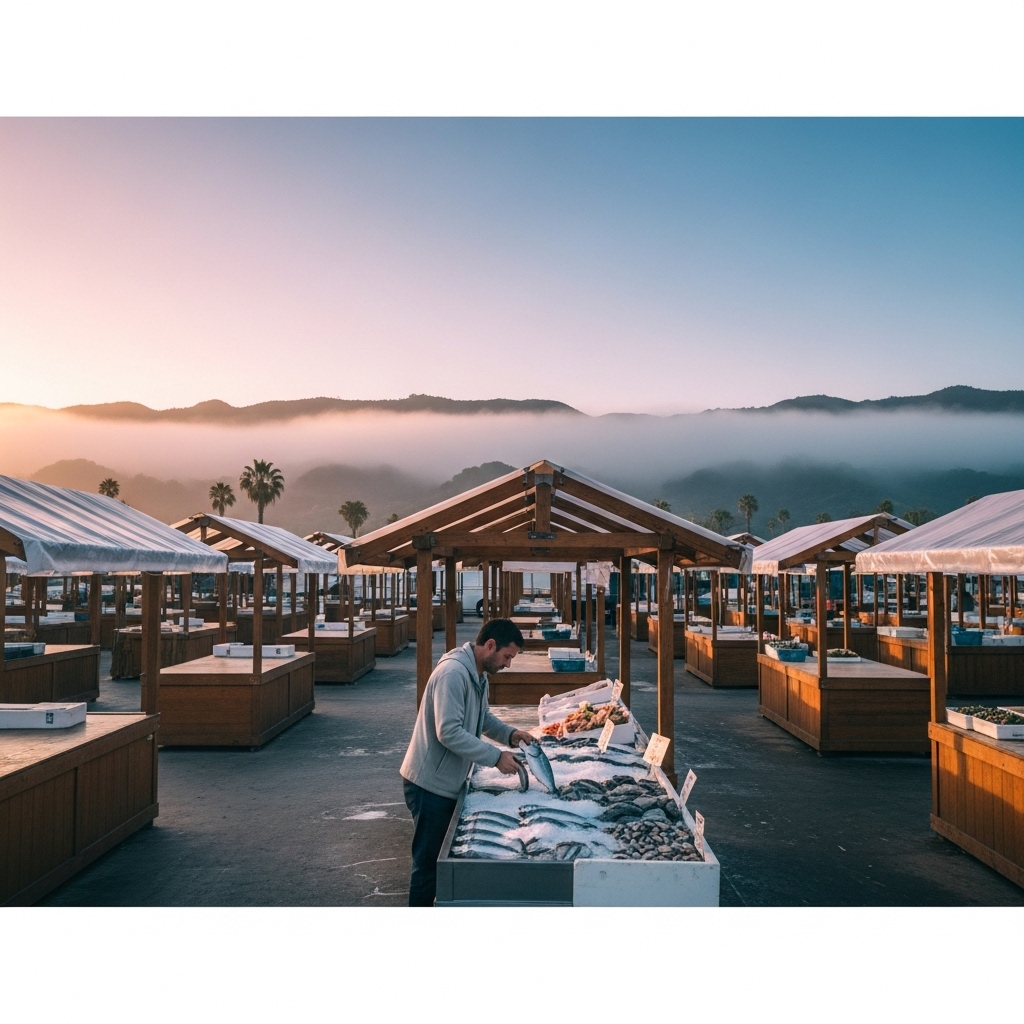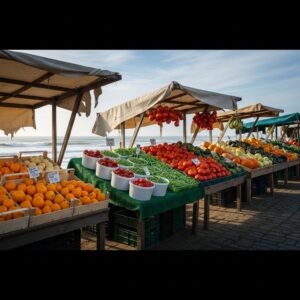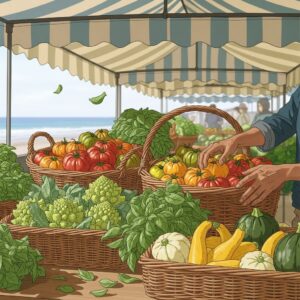Ask a Malibu local when to shop the fresh markets and you’ll get an answer shaped by tides, traffic, and sunlight. Hours are only half the story; the other half is timing your visit so the food and the day line up. Early risers swear by the first hour, when the ocean’s cool hand still rests on the produce and the fish is just unboxed. Parents may favor midmorning, when the pace eases and there’s room to chat at the stalls. Late-day browsers chase a golden light that makes tomatoes glow and stone fruit smell even sweeter. If you’re choosing your shopping window for the week ahead, a quick look at the weekly deals can help you match your timing to what’s peaking now, so you arrive ready to grab the stars before they disappear.
Shopping in Malibu is part market trip, part mini road adventure. The PCH can be a ribbon of ease or a string of brake lights; inland routes like Kanan or Malibu Canyon each have a personality, sometimes foggy, sometimes slow with weekend hikers. Planning your market visit around those patterns turns a chore into a pleasure. I often leave a beat earlier than I think I need to, roll down the windows if the marine layer is gentle, and let the ocean set the tone for the morning.
The Early Window: Crisp, Focused, Rewarding
Arriving as the market opens offers two gifts: selection and calm. Vendors are still arranging, which means you can ask questions with full attention on both sides. At the seafood table, the most sought-after fillets and whole fish are still available. Greens are perkiest, herbs coolest, and berries firm. If you’re planning a special dinner or hoping for something delicate, this is your window. Bring a cooler with an ice pack, choose your fish first, then build the rest of your basket around it—fennel for halibut, tomatoes for prawns, citrus for anything that swims.
Early shopping pairs well with precision. Your meals for the next couple of days fall into place as you move from stall to stall. You taste, decide, commit. The morning stays gentle, the parking forgiving, and the whole experience feels like a secret shared by those who made the effort to meet the sun. For many of us, this window is less about beating crowds and more about honoring the produce at its freshest.
Midmorning: Space to Wander and Talk
As the sun lifts, the market takes a deep breath. This is the time to meander, to circle back, to let a vendor tell you the story of a new variety they brought for the first time. Families materialize with strollers, neighbors linger over coffee, and the mood softens. Some delicate items may be gone, but in exchange you gain space to compare, to taste, to weigh peaches in your hand and choose by feel. If you’re learning the market, midmorning is especially kind; it allows time to listen and to ask, without the quiet urgency of the opening rush.
Midmorning is also when the first rounds of restocking happen. Tomatoes spread, new baskets of fruit appear, and coolers reveal the items saved for the second wave. At the fish stall, staff may offer to cut portions just so, and the conversation can lead you to species you’ve never tried. This window is a favorite for cooks who like to be inspired rather than predetermined; it’s where you find both ideas and ingredients.
High Noon and Early Afternoon: The Lull and the Glow
When the day leans into noon, you feel the sun more directly. The market doesn’t wilt—canopies and ocean air keep things pleasant—but the pace turns meditative. This is when you can move without hurry, revisit a farm to compare herbs, or browse a baker’s table with a relaxed gaze. Some stalls run light on delicate greens, but sturdier vegetables, stone fruit, and tomatoes hold beautifully. The seafood team has a rhythm by now, answering precise questions about portions and cooking methods.
By early afternoon, the light takes on a honeyed quality that flatters everything. If you’re drawn to the social aspect of the market, this is your time to run into friends, swap cooking notes, and savor the pleasure of shopping as an end in itself. It’s also the moment to look ahead—what you buy late can be your midweek anchor, especially roots and squash that keep without fuss.
Weather, Crowds, and the Malibu Mood
Weather sets the mood of any shopping window. A dense marine layer keeps mornings cool and quiet, ideal for delicate produce and unhurried chats. A warm offshore breeze leans toward energy and bustle, with vendors spritzing greens and shoppers seeking shade beneath the tents. Windy days pull canopies low and test clothespins, and rain—even light—thins crowds while concentrating flavors in roots and greens. Malibu rarely offers the same market twice, and that’s the pleasure of it; you can choose your window based on the atmosphere you want as much as the items you seek.
Parking and access fold into this calculus. Early hours favor close spots and easy loading; midmorning still offers options if you’re patient; later visits may mean a short, lovely walk past surf shops and cafés. Think of the walk as part of the ritual, a moment to shift gears from errands to discovery.
Planning Your Route and Your Menu
Even spontaneity benefits from a little structure. Upon arrival, do a slow loop. Let color and scent guide you, taste a slice of peach here, a tomato there, and listen to the farmers’ quick pitches that are really love letters to their fields. If you find your mind pinging with possibilities, jot them down. Choose seafood early, then build a plate in your head: halibut with fennel and lemon, prawns with tomatoes and basil, rockfish with cucumbers and herbs. The more you let the market write your menu, the better your week will taste.
When indecision creeps in, glance at your phone and take cues from the weekly deals to triangulate what’s abundant. If stone fruit is everywhere, make it the star. If peppers are piled high, plan a roast that turns into salads and sandwiches over a couple of days. The goal isn’t to chase a bargain; it’s to align with the season’s center of gravity so your meals require less effort and deliver more pleasure.
Etiquette and Flow
Markets run on courtesy as much as on the cash box. Step aside to decide, keep lines moving, and return samples with a smile. Ask before you touch the delicate stuff. If a vendor is mid-transaction, wait for the moment that invites a question. These small graces make the morning glide, turning a series of purchases into a pleasant conversation among neighbors. Bring a bag you like to carry, and a small cooler if you plan to linger; there’s a subtle pride in being prepared, and it pays off when you come across an irresistible whole fish.
Think, too, about the week ahead as you shop. Delicate greens want the spotlight tonight or tomorrow. Stone fruit ripens if left in the shade of your counter bowl, rewarding patience. Tomatoes want air and room; stack them and they sulk. If you keep these truths in mind, you’ll find yourself shopping confidently in any window the hours allow.
Frequently Asked Questions
What’s the single best time to shop for selection?
The opening hour offers the fullest range, especially for delicate greens and specialty seafood cuts. If you want a particular item, arriving early puts you closest to certainty and lets you chat uninterrupted with vendors about how to use it.
When is the market least crowded?
Midmorning often offers a sweet spot—after the initial rush, before the midday social tide—though weather and events in town can shift the balance. If your priority is space to explore, this window rewards curiosity and conversation.
How should I handle seafood if I’m not going straight home?
Bring a small cooler and an ice pack, buy fish first, and keep the cooler in the shade of your trunk. Plan to cook seafood early in your week for the best texture and flavor, letting sturdier produce wait their turn in the days ahead.
Does weather really change what’s available by time of day?
It can. Heat coaxes delicate greens to fade earlier; fog keeps them perky longer. Vendors adapt with spritzing and shade, but your experience improves when you match your shopping window to the day’s mood—cooler mornings for delicate items, warmer later hours for sturdy produce.
Any tips for parking and access?
Arrive with a flexible plan. Early windows make parking easiest; later trips may involve a short walk that doubles as a pleasant buffer from the road’s rhythm. Keep your bags light and your route deliberate, and the logistics fade into the background.
How do I plan meals around what I find?
Build a loose framework: one seafood dinner, one big salad, one roast of roots or squash, and fruit for snacking and dessert. Let the specific ingredients come from the stalls. This method ensures you use what you buy and keeps cooking fun rather than fussy.
There’s a special satisfaction in choosing the hour that suits your day and coming home with food that practically cooks itself. You’ll feel it when the cooler clicks shut on a perfect fillet and when the bag of tomatoes sets the car smelling like summer. If you’re ready to put the clock on your side, make a small plan before you go, listen to what the stalls are saying, and trust your senses. For a final spark before you set out, skim the weekly deals to see what the season is highlighting. Then go early, or go at golden hour—just go.
If this is your week to turn browsing into cooking, choose your window and lean in. Leave a little early, bring a cooler, and let the season guide your decisions once you arrive. To align your visit with what’s shining now, check the weekly deals, sketch a menu on your phone, and head to the stalls ready to say yes to flavor. Malibu will take care of the rest.




